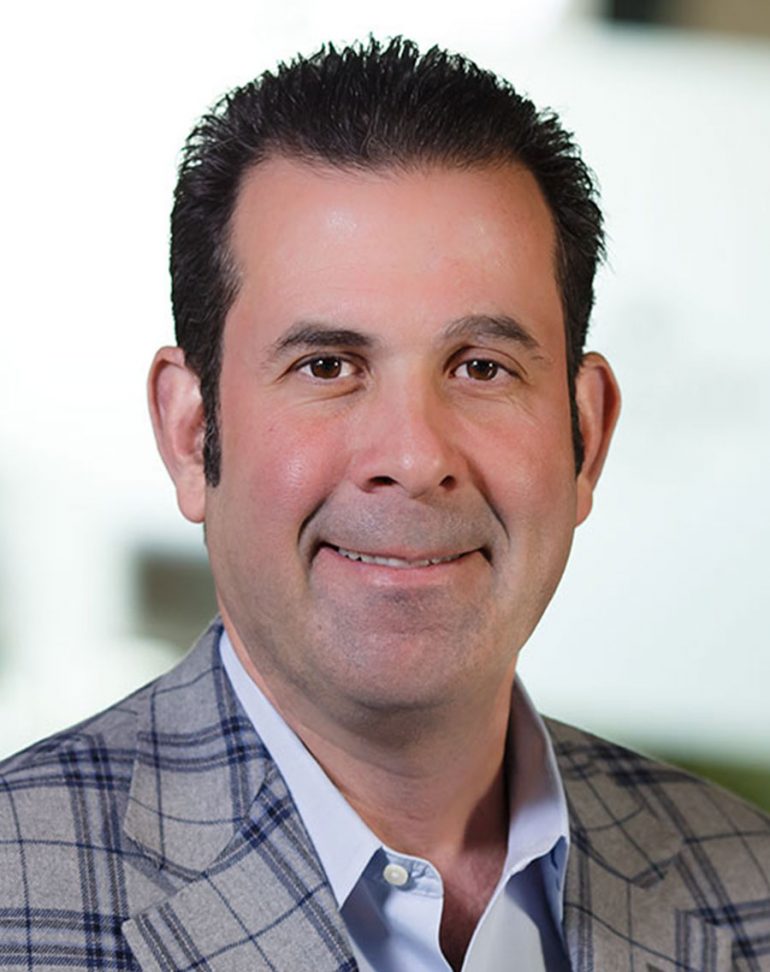Behind every brand delivering a great experience is a leader who recognizes the value of keeping things simple. In Simplifiers, Margaret Molloy, our Global CMO, interviews business leaders who put simplicity to work.
In this Simplifiers interview, Margaret speaks with Eduardo Conrado, EVP, Chief Strategy & Innovation Officer, Motorola Solutions.
MM: What does your brand stand for, and how does it deliver on that promise every day?
EC: We help people be their best in the moments that matter. 70% of our customers are first responders (police, fire, EMS), so we deliver on our promise every day as they run into burning buildings and answer 911 calls. They rely on our technology to augment them in those crucial, frequently life-saving moments.
MM: What role does simplicity play in delivering on that promise?
EC: When we worked on the purpose, we knew it had to be simple. So “moments that matter” is always defined by the customer. Implicit in many of these moments is a degree of urgency. Simplicity is necessary or else we can’t achieve the timeliness of our customer’s demands.
MM: How does your organization strive to create simple experiences?
EC: We are big believers in user-centric innovation. A lot of the teams that work on the solutions and products that we make for our customers spend thousands of hours observing customers and identifying where technology can help them in their job.
MM: What benefits has your company experienced from simplifying?
EC: We’ve gained a sharp focus on the things that matter. By evaluating our purpose through the lens of the customer, we get insight into what the portfolio should look like and how it should evolve. From a commercial standpoint, this creates customer affinity for the brand.
MM: Are there metrics you have that indicate that you’re indeed achieving that?
EC: We can trace it to a direct impact on revenue. We also look at revenue growth, market share, customer satisfaction and the success of our products in meeting new consumer demands.
MM: Based on those business metrics you’ve been performing well?
EC: If you go back five or six years and you look at the growth of our stock versus the overall S&P 500, we outperform it. Part of this is a consequence of our execution, and part of it is our focus. We can correlate this increase in performance to when we implemented the purpose and started communicating our brand promise externally.
MM: The cynic might say that every leader says they are focused on customer centricity. What do you think sets your group apart?
EC: We actually live it. Our innovation process starts with customer insights. We have a team of ethnographers that spend time with customers and immerse themselves in the customer experience. Their insights feed to the design team, which then feeds into the technology team, which can then optimally create or refine a product.
MM: Personally, how do you lead as a simplifier?
EC: Focus. You need to know what is important to customers in order to focus the teams on those areas.
MM: What’s the most recent, simple customer experience you’ve had personally?
EC: I recently purchased a travel backpack from Backcountry.com and put a two-day rush on my order in order to get it before a weekend trip. I got an email some hours later that read, “Hey, I noticed your order. Anything we can help you with?” I responded briefly that I needed the backpack by Saturday because I was going on a trip on Sunday. I received another email notifying me that my order had been moved up to one-day delivery. There was no extra cost or action required from me—it demonstrated a truly proactive approach to delivering an exceptional customer experience.
MM: What is the top piece of advice you’d give to other brands trying to simplify?
EC: Start with your purpose to get to the essence of what you do, and then step back to take an outside-in view, not an inside-out view.
MM: How do executives operationalize customer-centricity or simplicity?
EC: Customer-centricity is easy to say, much harder to do. You need to put in place teams that have that focus and empathy. User-centric research and design-thinking set the tone for what you deliver and enables the delivery of the optimal product or experience. It’s different from traditional product design because it’s not necessarily based on technology architecture and doesn’t come from merely asking engineers to design a product. It is best illustrated by something our CTO has said: “in many cases, the customers won’t tell you what they need, but they’ll show you.”
MM: Why do you think it is so difficult for the majority of companies to deliver simple experiences?
EC: In many cases, a simple experience means doing something different from the past. And that’s hard. Asking a company to change is hard.
MM: Can you do it with the same personnel? Or do you have to change people?
EC: I think you can begin to deliver simplicity by adopting a different approach. That’s why the user-centric design innovation approach is important. It opens up different ways of thinking. By taking the customer’s perspective, you’re questioning the status quo. And by questioning the status quo, you’re driving change, or at least introducing the possibility or need for change. Maybe you need a different set of skills or behaviors within the team, but that’s why innovation teams require multi-disciplinary groups to work together and bring different points of view.
MM: How do you most efficiently incorporate diverse disciplines?
EC: The wealth of talent means you’re going to be presented with lots of different paths, and this can be distracting. No idea is going to be perfect right off the bat, but if you can iterate and test it, you end up narrowing down to an elegant solution.
MM: What is the biggest mistake brands are making in regard to simplifying?
EC: Saying it but not doing it. It is easier to say you are customer-centric but much harder to do. If you are going to simplify, you actually have to implement programs, structures and people that can take this approach.
MM: What does “simplicity” mean to you?
EC: Simplicity means starting with the customer’s point of view, focusing on what they are trying to accomplish, and then building a solution to help them accomplish that as easily as possible.
MM: Are there particular nuances in B2B versus B2C?
EC: The nuances are mostly in the product. B2B tends to be much more complex in nature, but at the end of the day, we are all people trying to solve problems, albeit with different tools and solutions.
MM: Thank you, Eduardo.
This is an ongoing Simplifiers series. See interviews with Deirdre Bigley, CMO at Bloomberg, SVP, Chief Marketing & External Affairs Officer at Abbott, Elaine Leavenworth, GE CMO, Linda Boff; McLaren Automotive Head of Brand Marketing, Stephen Lambert; Ascension Chief Marketing and Communications Officer, Nick Ragone; Hertz CMO, Matt Jauchius; Direct Line Group Marketing Director, Mark Evans; McDonald’s CMO, Deborah Wahl; Jet.com President, Liza Landsman and VP Marketing, Sumaiya Balbale; Target CMO, Jeff Jones; Spotify CMO, Seth Farbman; Ally Financial CMO, Andrea Riley; Gannett CMO, Andy Yost; CVS Health CMO, Norman De Greve; Dunkin’ Brands CMO, John Costello; Zappos CEO, Tony Hsieh; Southwest Airlines CMO, Kevin Krone; and Google CMO, Lorraine Twohill.
Know a simplifier or would like to be included in the series? Please recommend an executive for my next interview: [email protected]
Margaret Molloy is Global CMO and head of business development at Siegel+Gale. Follow her on Twitter: @MargaretMolloy and Instagram: @MargaretMMolloy


